<< Our Photo Pages >> Ad Gefrin - Ancient Palace in England in Northumberland
Submitted by Andy B on Friday, 18 August 2006 Page Views: 21559
Multi-periodSite Name: Ad Gefrin Alternative Name: YeaveringCountry: England County: Northumberland Type: Ancient Palace
Nearest Town: Wooler Nearest Village: Yeavering / Kirknewton
Map Ref: NT9270630484
Latitude: 55.567972N Longitude: 2.11722W
Condition:
| 5 | Perfect |
| 4 | Almost Perfect |
| 3 | Reasonable but with some damage |
| 2 | Ruined but still recognisable as an ancient site |
| 1 | Pretty much destroyed, possibly visible as crop marks |
| 0 | No data. |
| -1 | Completely destroyed |
| 5 | Superb |
| 4 | Good |
| 3 | Ordinary |
| 2 | Not Good |
| 1 | Awful |
| 0 | No data. |
| 5 | Can be driven to, probably with disabled access |
| 4 | Short walk on a footpath |
| 3 | Requiring a bit more of a walk |
| 2 | A long walk |
| 1 | In the middle of nowhere, a nightmare to find |
| 0 | No data. |
| 5 | co-ordinates taken by GPS or official recorded co-ordinates |
| 4 | co-ordinates scaled from a detailed map |
| 3 | co-ordinates scaled from a bad map |
| 2 | co-ordinates of the nearest village |
| 1 | co-ordinates of the nearest town |
| 0 | no data |
Internal Links:
External Links:
I have visited· I would like to visit
Anne T visited on 6th Aug 2017 - their rating: Cond: 1 Amb: 4 Access: 5 Ad Gefrin, Northumberland (near Yeavering): Trying to dry out from the walk to the Stob Stones, we decided to go back via Wooler and the A687 rather than back down the A68, passing Yeavering Bell on our way. Driving north, I was surprised to find we re-entered England from Scotland, back into Northumberland National Park. As we drove through Kirknewton, this ‘stone bus shelter’ and unusual gate posts caught my eye and we screeched to a halt.
I was amazed that we’d never heard of this site at all, and I read the interpretation board, then walked into the field to look at the other board. In front of me there was nothing but tall, yellow grass, with a faint darker green line where a narrow track ran along the edge of the field.
There was nothing on the interpretation board to tell us where about on the site we were. Seeing that the site spread across the road, I crossed and peered into the field. This, of course, now being England, I couldn’t just let myself into the field and wander around.
There being an excellent 4G signal here, I pulled up the Gefrin website and was really surprised to find this site described as the most evocative archaeological sites in Northumberland and also one of the most remarkable archaeological discoveries of the 20th century.
If I hadn’t been so wet and tired after a long day out, I’d have walked round the fields. As it was, we decided to return home, do some investigation and return to the site another day (adding to our ever growing list of ‘want to see’ sites).
morgainelefay visited - their rating: Cond: 1 Amb: 4 Access: 4
Gremlyn16 Gremlyn16 have visited here
Average ratings for this site from all visit loggers: Condition: 1 Ambience: 4 Access: 4.5

Just over two miles north east of Hethpool, as the crow flies, in the township of Yeavering, lies the renowned site of Ad Gefrin, the Anglian palace complex. The site was the subject of excavation by Brian Hope-Taylor between 1952-1962
Whilst archaeologists still debate the results of Hope-Taylor’s excavations and the conclusions he drew from them, the basic outline seems clear. The complex was a major royal centre in the Anglian kingdom of Bernicia, and later Northumbria, with administrative and ceremonial functions, which involved the collection the renders provided by the surrounding peasant communities and redistributing them to key royal supporters and valued warriors. The complex contained a great defended or enclosed meeting place with adjacent halls and a timber-built ‘theatre’ or political arena.
More: Northumberland National Park and follow the links through to the external websites.
Note: New path and open access to Ad Gefrin, see comment
You may be viewing yesterday's version of this page. To see the most up to date information please register for a free account.
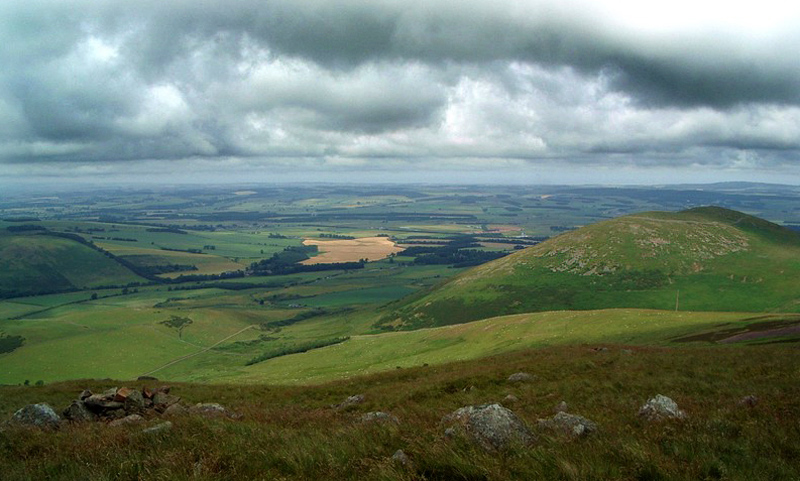
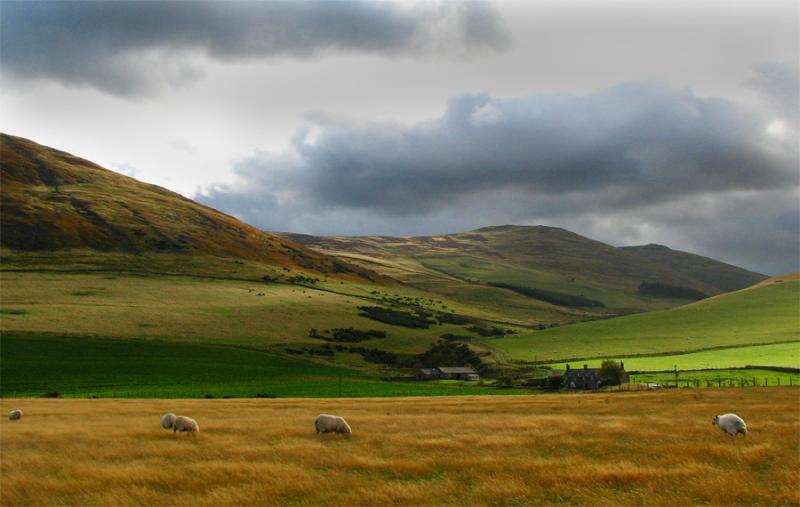

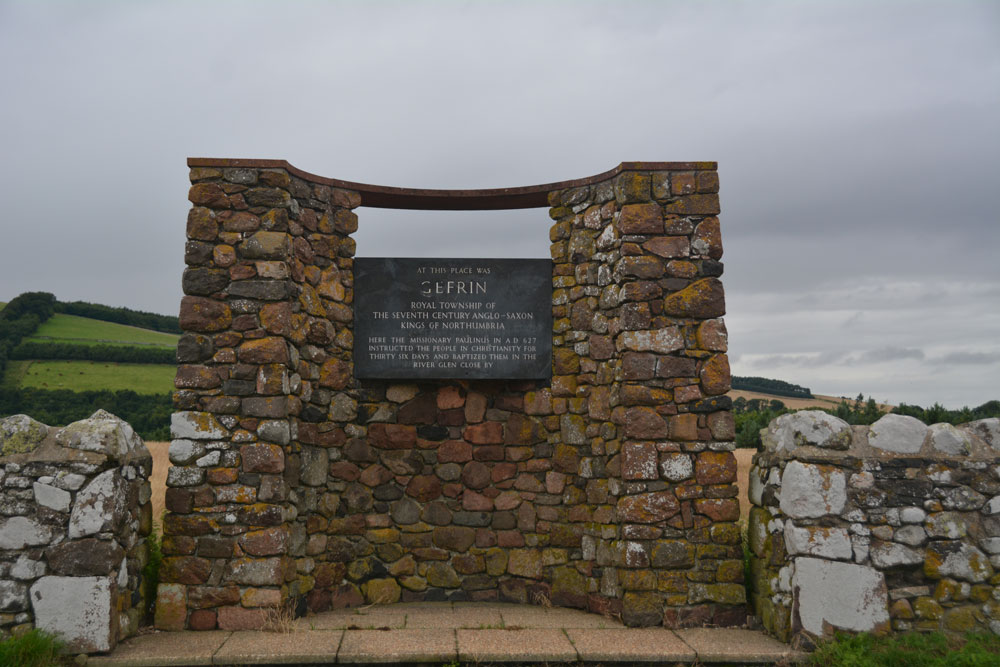
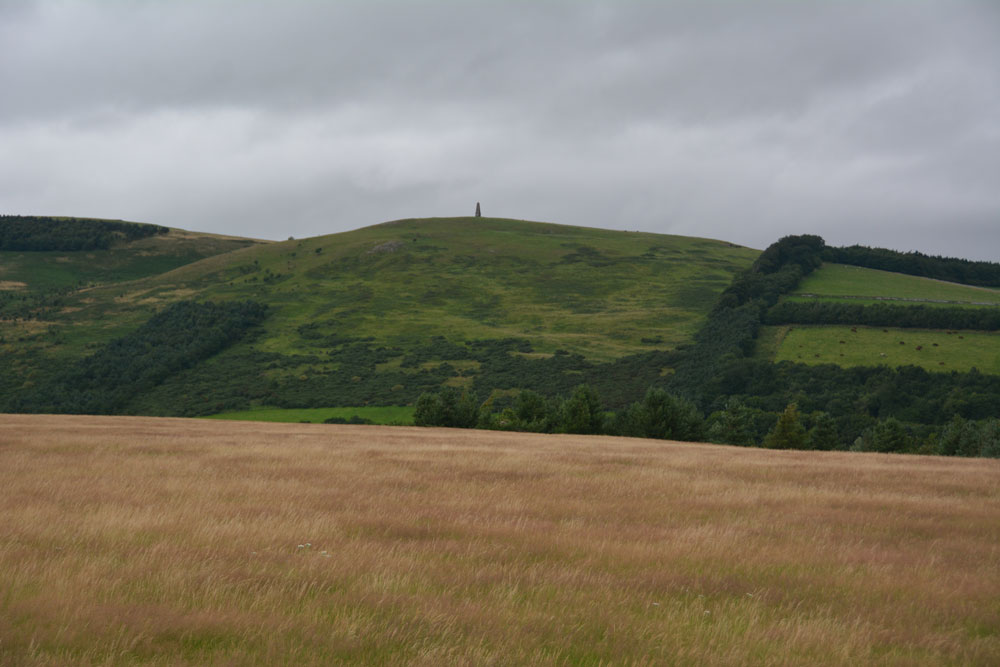
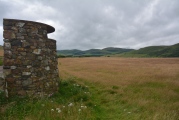
Do not use the above information on other web sites or publications without permission of the contributor.
Click here to see more info for this site
Nearby sites
Key: Red: member's photo, Blue: 3rd party photo, Yellow: other image, Green: no photo - please go there and take one, Grey: site destroyed
Download sites to:
KML (Google Earth)
GPX (GPS waypoints)
CSV (Garmin/Navman)
CSV (Excel)
To unlock full downloads you need to sign up as a Contributory Member. Otherwise downloads are limited to 50 sites.
Turn off the page maps and other distractions
Nearby sites listing. In the following links * = Image available
153m ESE 110° Old Yeavering Henge* Henge (NT92853043)
302m ESE 110° Battle Stone (Kirknewton)* Standing Stone (Menhir) (NT92993038)
1.2km S 175° Yeavering Bell* Hillfort (NT92802931)
1.3km WSW 238° St Gregory's Hill* Hillfort (NT9161329805)
1.4km W 260° St. Gregory's The Great (Kirknewton)* Sculptured Stone (NT9134630251)
1.9km SW 228° Torlee House, Kirknewton Rock Art (NT9127029190)
1.9km SW 228° West Hill, Kirknewton* Rock Art (NT9125329199)
2.0km SSE 162° Whitelaw (Kirknewton) Rock Art (NT9330028600)
2.0km WSW 241° West Hill Camp* Hillfort (NT9096029518)
2.3km NE 40° East Marleyknowe Henge Henge (NT94233226)
2.4km NE 41° Milfield Cursus Cursus (NT943323)
2.6km SE 125° Gleads Cleugh Hillfort (NT948290)
2.6km ESE 122° White Law Hillfort (NT949291)
2.8km NNE 27° Coupland Henge Henge (NT940330)
3.1km ENE 65° Ewart Cursus Cursus (NT955318)
3.2km E 86° West Akeld Steads Henge Henge (NT95883070)
3.2km ENE 67° Ewart Park Henge Henge (NT95693172)
3.4km NNE 22° Milfield Reconstructed Henge at Maelmin Heritage Centre* Henge (NT9400033631)
3.5km SE 124° Harehope Hill* Hillfort (NT956285)
3.6km SSW 194° Yeavering Bell Stone Circle Stone Circle (NT918270)
3.7km NNE 22° Maelmin Anglo-Saxon Royal Settlement. Ancient Village or Settlement (NT941339)
3.7km ENE 59° Thirlings Ancient Village or Settlement (NT959324)
4.1km WSW 249° Hethpool 1 & 2 (Ewe Hill) Rock Art (NT8887028990)
4.2km N 9° Milfield South Henge (NT934346)
4.2km ESE 104° Bendor Stone* Standing Stone (Menhir) (NT9681929460)
View more nearby sites and additional images



 We would like to know more about this location. Please feel free to add a brief description and any relevant information in your own language.
We would like to know more about this location. Please feel free to add a brief description and any relevant information in your own language. Wir möchten mehr über diese Stätte erfahren. Bitte zögern Sie nicht, eine kurze Beschreibung und relevante Informationen in Deutsch hinzuzufügen.
Wir möchten mehr über diese Stätte erfahren. Bitte zögern Sie nicht, eine kurze Beschreibung und relevante Informationen in Deutsch hinzuzufügen. Nous aimerions en savoir encore un peu sur les lieux. S'il vous plaît n'hesitez pas à ajouter une courte description et tous les renseignements pertinents dans votre propre langue.
Nous aimerions en savoir encore un peu sur les lieux. S'il vous plaît n'hesitez pas à ajouter une courte description et tous les renseignements pertinents dans votre propre langue. Quisieramos informarnos un poco más de las lugares. No dude en añadir una breve descripción y otros datos relevantes en su propio idioma.
Quisieramos informarnos un poco más de las lugares. No dude en añadir una breve descripción y otros datos relevantes en su propio idioma.